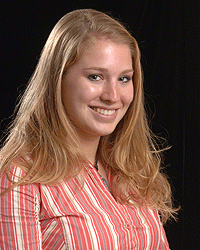
Alaina Brinley
Kalamazoo College, MI
Mentor: Jennifer Blank
Project: Researched the microbial diversity in ophiolite-hosted coldsprings as an analog to martian environments. Microbe-bearing water samples were collected in Del Puerto Canyon, California. DNA was extracted from the samples followed by PCR, denaturing gradient gel electrophoresis, and DNA sequencing. Rock and water samples were evaluated for mineral/chemical content
Kalamazoo College, MI
Mentor: Jennifer Blank
Project: Researched the microbial diversity in ophiolite-hosted coldsprings as an analog to martian environments. Microbe-bearing water samples were collected in Del Puerto Canyon, California. DNA was extracted from the samples followed by PCR, denaturing gradient gel electrophoresis, and DNA sequencing. Rock and water samples were evaluated for mineral/chemical content
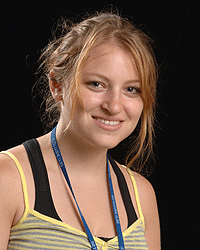
Zoe Buck
Princeton University, NJ
Mentor: Frank Drake
Project: Worked to improve the Optical SETI program at Lick Observatory, and did extra observing for the search for extrasolar Planets
Princeton University, NJ
Mentor: Frank Drake
Project: Worked to improve the Optical SETI program at Lick Observatory, and did extra observing for the search for extrasolar Planets
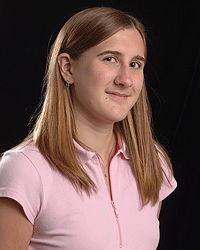
Jenny Carton
Villanova University, PA
Mentor: Doug Caldwell
Project: Used data taken at the South Pole to search for extrasolar planets
Villanova University, PA
Mentor: Doug Caldwell
Project: Used data taken at the South Pole to search for extrasolar planets
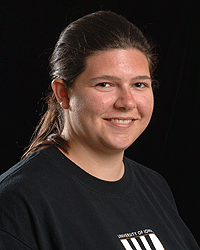
Kelsey Clubb
University of Iowa
Mentor: Gerry Harp
Project: Worked with Dr. Gerry Harp on a project to stream real-time data from the Allen Telescope Array to the Internet, making it available for museum exhibits, classrooms, and to the public at large
University of Iowa
Mentor: Gerry Harp
Project: Worked with Dr. Gerry Harp on a project to stream real-time data from the Allen Telescope Array to the Internet, making it available for museum exhibits, classrooms, and to the public at large
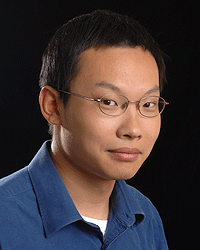
Yufei Liu
Princeton University, NJ
Mentor: Alessandra Ricca
Project: Worked with Dr. Alessandra Ricca using a theoretical chemistry program to model the formation of aromatic rings with nitrogen on Titan. Using the same program, they investigated the role of nanodiamonds in the interstellar medium
Princeton University, NJ
Mentor: Alessandra Ricca
Project: Worked with Dr. Alessandra Ricca using a theoretical chemistry program to model the formation of aromatic rings with nitrogen on Titan. Using the same program, they investigated the role of nanodiamonds in the interstellar medium
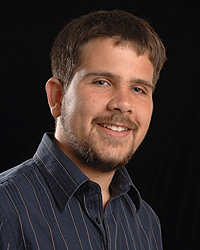
Jason Merritt
Villanova University, PA
Mentor: Peter Jenniskens
Project: Studied meteor observing and spectroscopy, and implemented an observing system using a digital camera to image meteors
Villanova University, PA
Mentor: Peter Jenniskens
Project: Studied meteor observing and spectroscopy, and implemented an observing system using a digital camera to image meteors
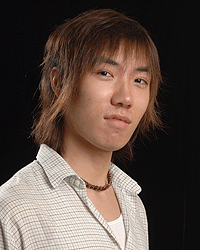
Donald Pau
University of California, Berkeley
Mentor: Richard Quinn
Project: Worked with Dr. Richard Quinn in applying the Gas Exchange Experiment (one of the biology experiments sent to Mars on the Viking landers in 1976) to martian soil analogs from the Atacama Desert in Chile
University of California, Berkeley
Mentor: Richard Quinn
Project: Worked with Dr. Richard Quinn in applying the Gas Exchange Experiment (one of the biology experiments sent to Mars on the Viking landers in 1976) to martian soil analogs from the Atacama Desert in Chile
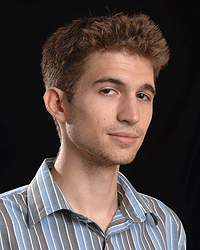
Michael Papadopoulos
University of California, Davis
Mentor: Rocco Mancinelli
Project: Worked in the laboratory with Dr. Mancinelli designing experiments to help catalog the response of DNA to UV irradiation
University of California, Davis
Mentor: Rocco Mancinelli
Project: Worked in the laboratory with Dr. Mancinelli designing experiments to help catalog the response of DNA to UV irradiation
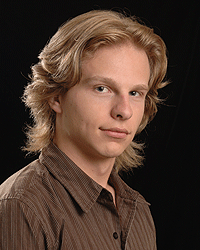
Alex Parker
University of Washington
Mentor: Devon Burr
Project: Studied a suite of martian fluvial geomorphologic features; primarily, reconstructing the history of Grjotá Vallis, a young giant outburst flood channel that covers ~50,000 sq. km. near Mars' equator
University of Washington
Mentor: Devon Burr
Project: Studied a suite of martian fluvial geomorphologic features; primarily, reconstructing the history of Grjotá Vallis, a young giant outburst flood channel that covers ~50,000 sq. km. near Mars' equator
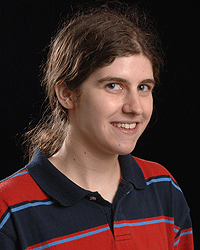
Lindsay Rutter
Penn State University
Mentor: Andy Mattioda
Project: Worked in the Astrochemistry Laboratory at NASA Ames Research Center to perform structural comparisons of polycyclic aromatic nitrogen heterocycles (PANHs) in the Near Infrared region. PANHs are of astrobiological interest because they are ubiquitous in the interstallar environment, have been identified in meteoritic extracts, and constitute our nucleobases
Penn State University
Mentor: Andy Mattioda
Project: Worked in the Astrochemistry Laboratory at NASA Ames Research Center to perform structural comparisons of polycyclic aromatic nitrogen heterocycles (PANHs) in the Near Infrared region. PANHs are of astrobiological interest because they are ubiquitous in the interstallar environment, have been identified in meteoritic extracts, and constitute our nucleobases
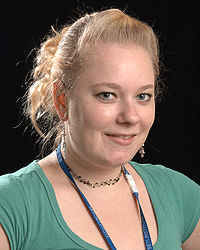
Circe Verba
Oregon State University
Mentor: Cynthia Phillips
Project: Observed dark slope streaks that form on crater rims, knobs, and volcanic sides on Mars with Dr. Cynthia Phillips. Studied two possible explanations for these slope streaks: dry and wet models, with a particular interest in aqueous processes
Oregon State University
Mentor: Cynthia Phillips
Project: Observed dark slope streaks that form on crater rims, knobs, and volcanic sides on Mars with Dr. Cynthia Phillips. Studied two possible explanations for these slope streaks: dry and wet models, with a particular interest in aqueous processes
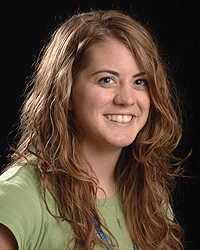
Jaime Warrington
Lyon College, AR
Mentor: Rocco Mancinelli
Project: Worked in the laboratory of Dr. Rocco Mancinelli to study UV and dessication survival of halophile microbes
Lyon College, AR
Mentor: Rocco Mancinelli
Project: Worked in the laboratory of Dr. Rocco Mancinelli to study UV and dessication survival of halophile microbes
